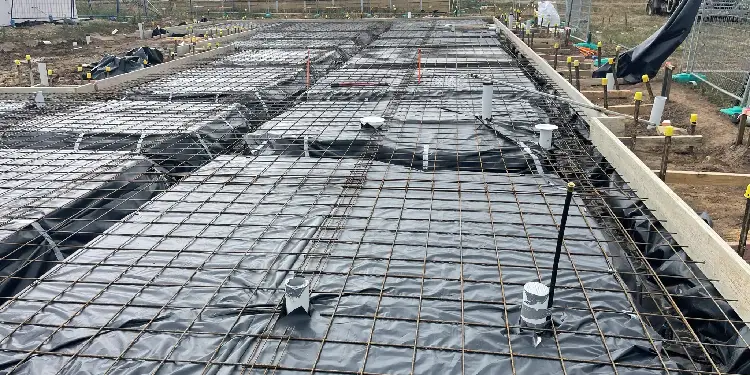Table of Contents
ToggleA strong foundation is one of the most important parts of any building project. Therefore, choosing the right slabs when laying the groundwork is key. You’ll need to consider different factors like soil condition, site layout, design plans and budget before picking a type.
Deciding between two very popular options—raft slab vs waffle slab—can be tricky. They both have their advantages and work well in different situations. In this blog, we’ll explore their key differences and help you decide which slab suits your project better.
What is a Waffle Slab?
A waffle slab is a structural system that’s designed to efficiently support floor loads. It has beams running underneath in a grid pattern, with polystyrene blocks in between to create hollow spaces. They are usually quicker, easier and cheaper to construct than other alternatives.
What is a Raft Slab?
A raft concrete slab is a concrete slab reinforced with steel that’s laid on the soil. They are particularly suitable for a variety of site conditions, including sloped areas. As their design allows them to adapt to uneven terrain, they are a reliable option for tricky ground conditions.
Raft Slab vs Waffle Slab: What are the Key Differences?
When choosing the right slab for your home, it’s worth understanding how each type performs. Check out the main differences between raft and waffle slabs:
| Aspect | Raft Slab | Waffle Slab |
|---|---|---|
| Construction | A thick concrete slab is laid directly onto the ground. Deep edges and internal beams are embedded into the soil to provide enhanced structural support. v | A concrete slab is cast over a grid of polystyrene pods placed on the ground. It creates a void that forms ribs beneath the surface. |
| Cost | It is more expensive as more materials and labour are required. | More cost-effective overall, with reduced material and labour requirements resulting in a lower average build cost. |
| Site Suitability | This is suitable for various soil conditions, including soft, reactive, or sloping sites, and performs better in areas with poor drainage. | It's ideal for flat, stable, and well- drained sites with firm ground; not recommended for soft, reactive, or sloping soil conditions. |
| Load Distribution | It spreads the load evenly and is ideal for heavy structures and multi-storey buildings. | This is suitable for standard residential loads, but not ideal for heavy or multi-storey structures. |
Do You Need Help Choosing the Right Slab? Reach Out to Terramyer
At the end of the day, choosing the right slab depends on site conditions, your vision for the home, and your builder’s advice. If you’re still weighing up a raft slab vs a waffle slab, we’re here to help. At Terramyer, we’ll be happy to guide you to ensure your project’s foundation is strong, reliable, and built to last. Chat with our experts today by calling us on 0419 356 243, or drop us an email at terramyer@gmail.com to learn more.

